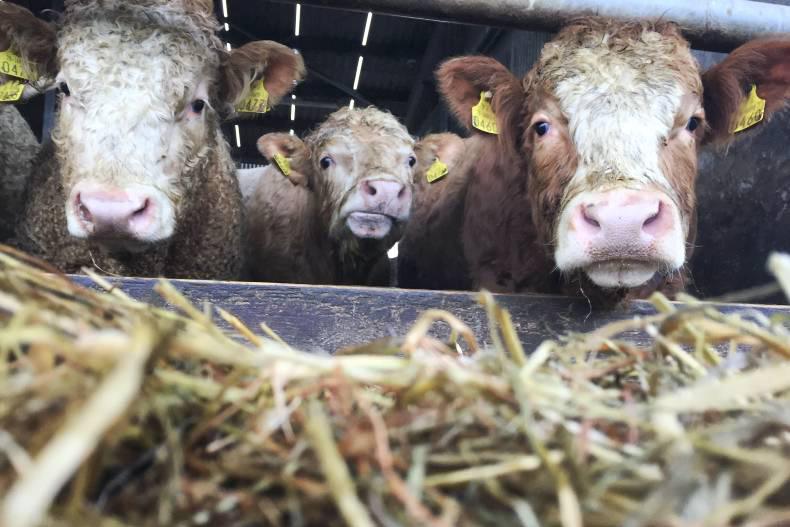“Criminal ... that’s criminal what ye boys are at there ...”
It’s a hazy May afternoon in 2014. I’m showing some trial cattle to a group of western farmers.
We’re standing in a paddock that’s home to 20 impressive Limousin and Charolais-type suckler bulls. Half are grazing and half are stretched out in the baking sun. They’re all well-conformed, beefy animals.
“How old are them, get them into the shed ... the size of them ... ”
I explain that they are 17 months of age and that the aim is to finish them from grass with meal in the first 100 days of the season, when grass quality is at its peak.
“Not a f*ckin’ hope; they need ad-lib, boy ...”
That particular group of bulls were getting 6kg of meal daily, meaning that 50% of their daily intake was in the form of barley.
Cattle indoors
What was interesting at the time was that we had a group of identical cattle indoors on ad-lib barley too, acting as a positive benchmark.
After 90 days, all animals were slaughtered. Daily liveweight gains for the grass group and the indoor group differed by just 0.1 kg − in favour of the housed animals.
The grass cattle had achieved an impressive 1.74 kg of daily growth. Carcase weights were similar to the indoor bulls (387kg v 406kg). Conformation scores were identical (U-).
Had we cracked it?
Though weight gains were similar, the ad-lib bulls were almost four scores fatter (2- v 3=). Our grass group were under-fleshed in terms of factory specification.
With such bulls, fattening is the name of the game.
The differences came down to energy. Outdoors, energy intake was 24% less due to the nutritive contrasts between grass and barley; think rice cakes versus cream cakes.
When enough energy is ingested, fat is deposited.
Simple explanation
But, fat lay-down is an extremely energy-expensive process. The energy cost of fat deposition is four times that of lean. Fat tissue is also between 15% and 20% less dense than muscle. We can deposit quite a lot of fat in terms of volume, without a huge effect on the animal’s live weight.
Though our extra daily gain indoors equalled the weight of a medium-sized orange, over 90 days it gave us almost four extra fat scores.
However, what was puzzling was that the daily gains of the grass animals were spectacular, yet they were still exceedingly lean. At such rates of gain (1.74 kg), we would expect greater rates of fattening. In previous years continental bulls fed ad-lib barley indoors at Grange had achieved lower daily gains (1.65 kg), but had fat scores to spare at slaughter (3=).
The simple explanation was probably exercise. More of the grazing bull’s energy was being burned up walking, grazing and moving around in general.
I’m drawn to a statistic from a programme aired on RTE recently regarding Ireland’s obesity epidemic.
Our children are too fat, but our grazing bulls are too lean.
Bigger schoolyards, smaller paddocks.
